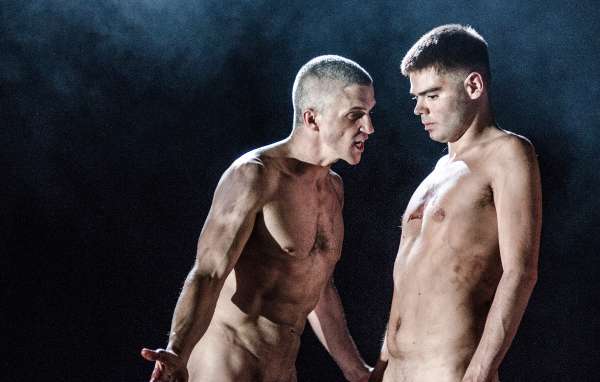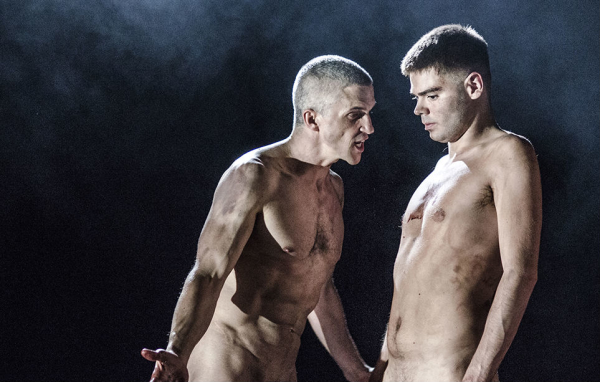The Curing Room (Pleasance Theatre)

Among the curious ironies of World War One is that after fighting for four years on the Western Front the average British soldier returned home in some ways outwardly healthier – almost certainly weighing more – than when he left. This wasn’t so much a consequence of the virtues of front line cuisine but testament instead to the poverty in which many of the soldiers had grown up where illnesses associated with malnutrition, including rickets and TB, were common.
The seven naked soldiers locked, abandoned and growing hungry in "The Curing Room" (a cellar where animal carcasses are usually cut and dried) aren’t British, but Russian; and the war in question is the second rather than the first. But it’s hard to believe that the bodies of Russian tanks crews who grew up against the backdrop of a series of engineered famines, wouldn’t look more like those of British Tommies (average height 5’6) than the healthy toned six footers padding confidently about the floor of the Pleasance. This is a play full of inadvertent and manifest paradox.
The promise nudity extends is that of authenticity: we expect both civilization and individual characters to be similarly stripped. But in The Curing Room, perhaps slightly spooked by the boldness of its own premise, this doesn’t really happen. The play never gets boring because it has the same pulpy narrative drive of horror films, propelled not by the question of who done it but who will survive or at least who will snuff it last? The play is a somewhat more sombre affair than say Scream or Final Destination 3 but for all the gestures at deeper meaning it’s a weirdly optimistic vision of mankind, no matter the murder and cannibalism.
David Iain Lee’s script telescopes the action of several weeks into a two hour running time. The unfortunate consequence is that a few of the shorter scenes never really settle and though there are a number of witty lines there are also a couple of jarring twists. Joao de Sousa’s direction and the ensemble cast are efficient rather than inspired – though certainly good enough to make their nudity incidental, which is to their credit. I would have preferred a more concrete set to the abstract darkness, but that’s nitpicking.
Oddly in a final irony these men, meant to be a captured tank crew, would often have fought naked in any case. During the summer months their unventilated, cramped machines grew blisteringly hot, whilst their uniforms were so infested with lice that they would often bathe in petrol, in spite of the very real danger of self-immolation. So no more bashful perhaps than professional actors. Worth a look, though maybe not too closely.











